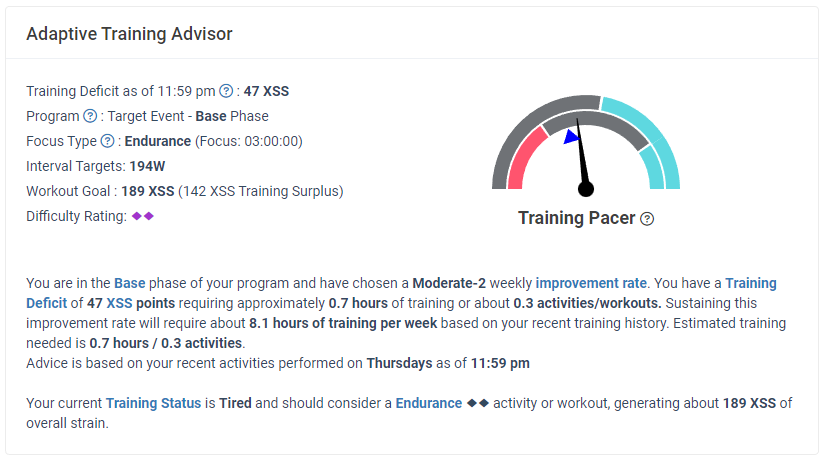
The Xert Adaptive Training Advisor determines if you need to train or if you can afford to take some time off in order to meet your Improvement Rate goals. By comparing the amount of training you have done versus the training required to meet the Improvement Rate, Xert then calculates how much below (a deficit) or above (a surplus) you are using your As Of time, compared to your weekly Improvement Rate goal. This provides you some feedback regarding the amount of training needed to achieve the improvement you’re looking for, and continue progressing your fitness.
The surplus & deficit value is calculated based on your past week of training and does not carry over, meaning if you missed reaching your target last week, Xert will not force you to make up for it this week. Similarly, if you exceeded your Improvement Rate over the previous week, that doesn’t mean you can stop training this week. The amount of training you need to perform is calculated on the current week (a rolling 7 day window). If you performed high XSS activities or workouts about a week ago you should expect to see more variability in your calculated deficit/surplus numbers. This is normal as the XATA encourages you to keep progressing week-to-week based on the elevated levels your previous training achieved.
If you start to fall behind with a large deficit, the XATA will boost your Workout Goal to encourage you to reduce the deficit. If you are finding it too difficult to close your daily XSS deficit, your Improvement Rate may be set too high – consider lowing it. On the other hand, if you are finding you often have a large surplus and the XATA is giving you more time off than you’d like, your Improvement Rate may be set too low – try increasing it.
To read more on returning to training after a break, read our blog post here!